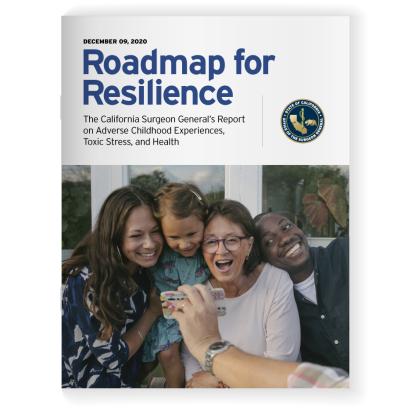The prevalence of adverse childhood experiences (ACEs) is a public health and educational crisis that has only grown with the additional stressors of the COVID-19 pandemic. Without the buffering effects of responsive and loving adult care and community support, a child exposed to repeated or sustained adversity—abuse, neglect, or other challenges such as divorce or a family member’s substance misuse or mental illness—may experience toxic stress. Unlike lower levels of stress that are healthy or tolerable, toxic stress can negatively affect development. In addition to increasing the likelihood of a toxic stress response, acute stressors like the pandemic can reduce access to valuable sources of support, like schools, health providers, and community organizations, and increase occurrences of household violence, among other effects. Because of COVID-19, many children were largely isolated from their peers and their community support systems; lost jobs, food insecurity, and the illness or death of loved ones may also have caused household upheaval. All of these factors increase the risk of toxic stress.
ACEs and toxic stress are present in every demographic group but are disproportionately high for members of already vulnerable populations, including racially marginalized people; people who are unemployed, unable to work, or have low incomes; people without adequate health insurance; and LGBTQ people. The social, educational, economic, and health effects can ripple down through generations. ACEs are associated with 9 of the 10 leading causes of death for adults in the United States; they’re also connected to increased likelihood of learning and behavioral problems, high school noncompletion, unemployment, homelessness, incarceration, and more—and they cost the United States hundreds of billions of dollars per year in healthcare, education, social services, and lost productivity. If we want to build a more equitable world, we have to work to prevent ACEs and toxic stress.
All of these challenges, and a path forward, are laid out in Roadmap for Resilience: The California Surgeon General’s Report on Adverse Childhood Experiences, Toxic Stress, and Health, which explains the science of ACEs and California’s plan to reduce them by half in one generation. It’s an ambitious plan, but research shows that even simple interventions can make significant differences. At over 400 pages, plus supplementary materials, the report offers health professionals, policymakers, educators, and public employees an invaluable set of resources to understand, recognize, and work to prevent ACEs, and to provide compassionate care and much-needed relief to children and adults.
California’s roadmap stresses the importance of primary, secondary, and tertiary prevention, which build on each other and are all essential to reducing ACEs. Primary prevention focuses on proactive investment in nurturing relationships and strong, healthy communities at individual, family, local, state, and federal levels. Key strategies are to
- raise awareness about the effects of ACEs and how to help children develop healthy stress responses;
- support positive adult-child relationships, including by ensuring the well-being of adult mentors and caregivers, such as school personnel;
- build individual, family, and community resilience; and
- address key inequities like increasing access to early childcare and education, cleaning up environmental contamination, and reducing structural racism in education, healthcare, and justice systems.
The most critical element is coordinated, cross-sector training in and implementation of ACEs-aware and trauma-informed practices involving first responders, health professionals, educators, social workers, public safety workers, and more.
This training facilitates secondary prevention efforts, which focus on early detection and evidence-based interventions for children experiencing adversity. The goal is to prevent the development of toxic stress physiology and resulting health issues through
- early screening for ACEs, ACEs-associated health conditions, and protective factors;
- education about toxic stress and strategies to regulate stress responses; and
- team-based care that includes health professionals, social workers, educators, and local agencies as needed.
For children and adults who already exhibit evidence of a toxic stress response, tertiary prevention aims to improve outcomes (in turn acting as primary prevention for the next generation). Tertiary prevention methods can decrease the likelihood or lessen the severity of ACEs-associated health conditions by helping people
- build healthy, supportive relationships;
- sleep well, eat nutritious foods, engage in regular exercise, interact with nature, and practice mindfulness; and
- access culturally competent mental and behavioral healthcare as needed.
For these tertiary strategies to be effective, it’s essential that education, healthcare, public health, social services, justice, and other sectors work to prevent further harm. This effort has to occur at the individual level—for example, by making sure a child or teen who exhibits behavior seen as challenging has access to restorative discipline practices that do not lead to retraumatization (administered by a compassionate, trauma-informed care team), access to afterschool programs that help build skills and offer mentorship opportunities, and reliable transportation to and from school. But it’s just as important to prevent harm at the structural level through legislation and policy changes, such as efforts to decriminalize homelessness and mental illness so that people can receive care and support rather than punishment.
Roadmap for Resilience emphasizes that reducing ACEs is possible with concerted efforts both within and across multiple sectors, as well as in partnership with families and children. After summarizing the research base, the first half of the report offers detailed recommendations for each sector and at each level of prevention, including case studies and special sections on the compounding role of COVID-19; the second half outlines California’s specific strategies and the statutory framework, including the ACEs Aware Initiative, as a model other states can learn from. Download the full report and sector-specific briefs, and watch an introductory webinar, here. To take your learning further, join regular, free webinars hosted by the ACEs Aware Initiative (some qualify for continuing education credits) here.

